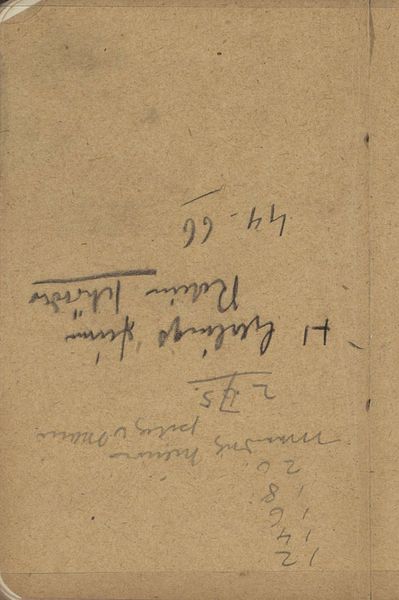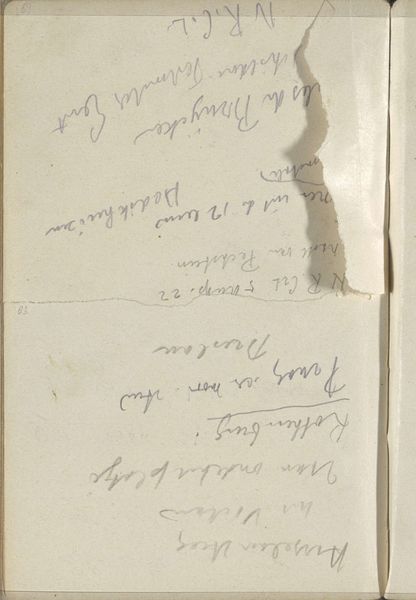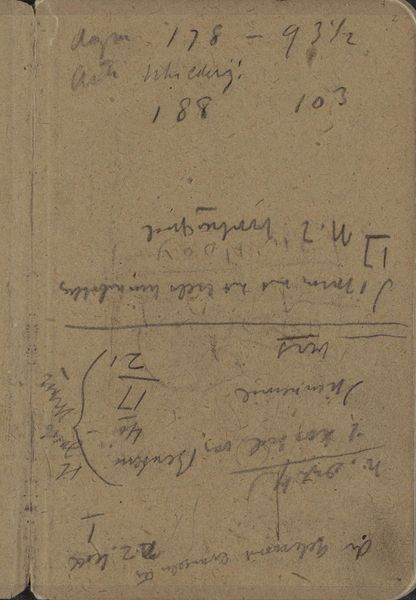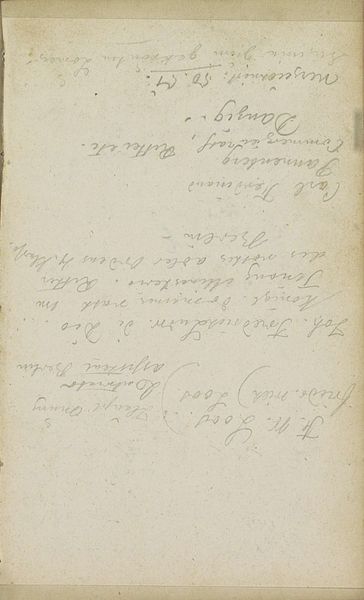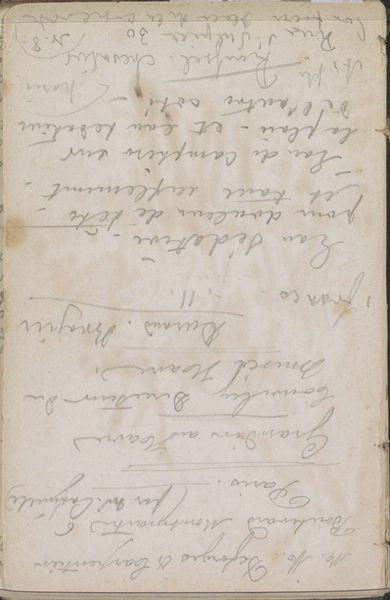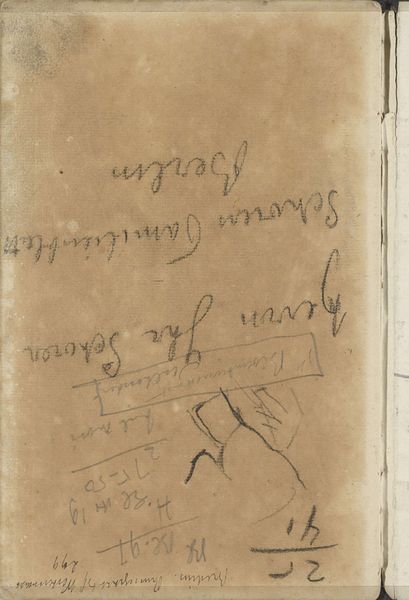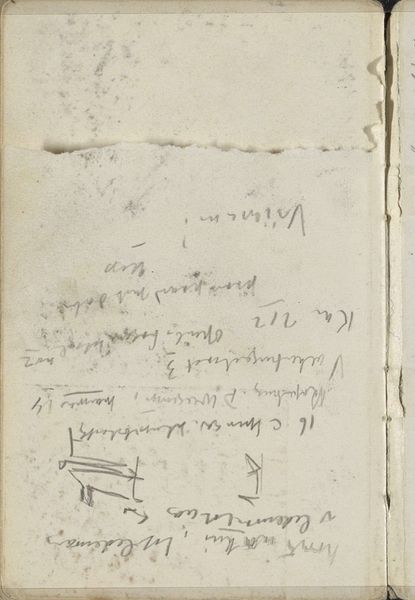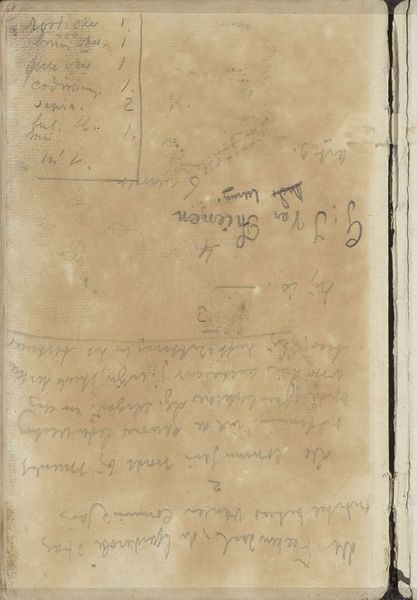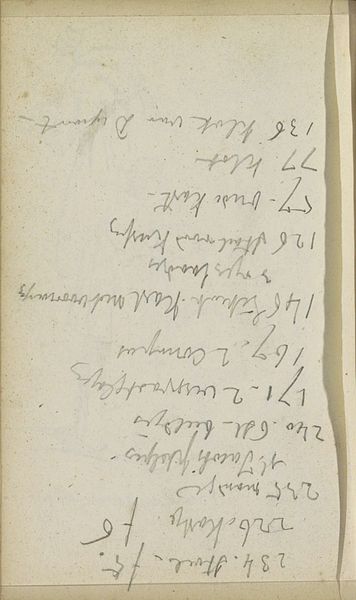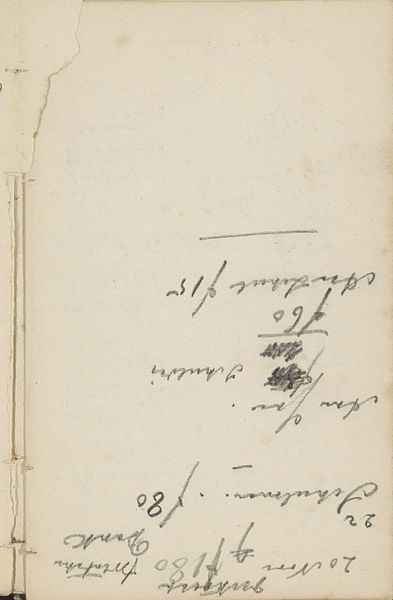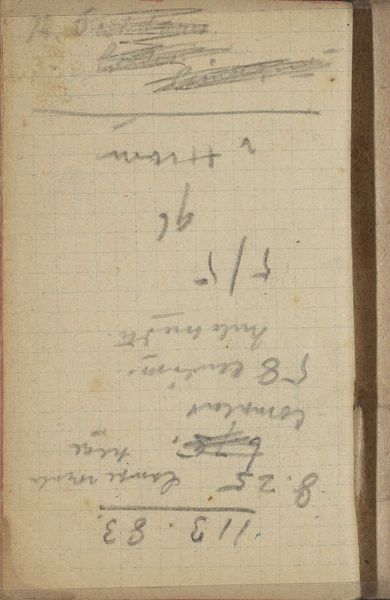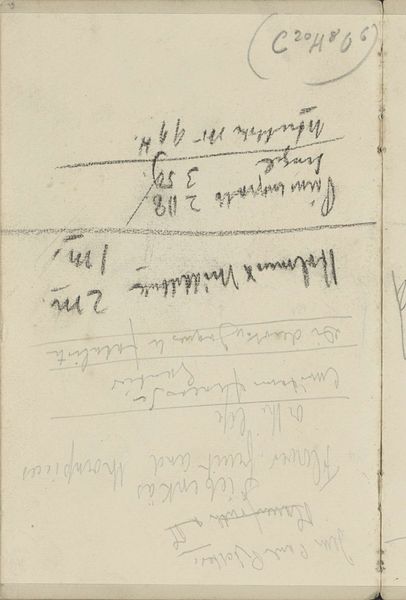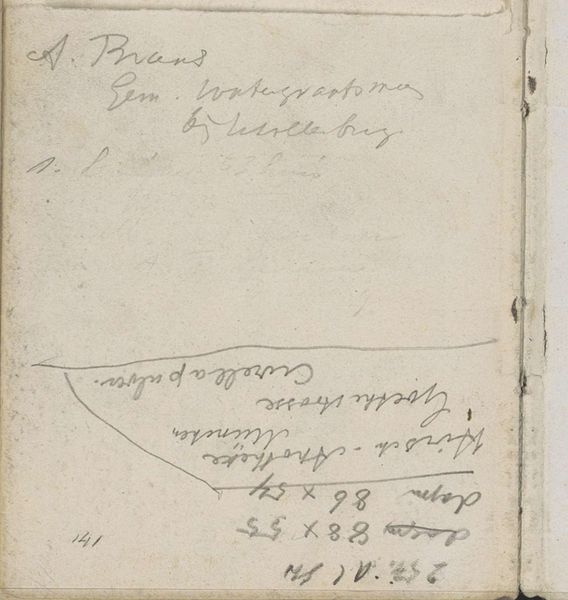
Copyright: Rijks Museum: Open Domain
Editor: Breitner’s "Annotaties," created around 1903, is an ink drawing on paper held here at the Rijksmuseum. It feels almost like a glimpse into the artist's mind, like reading someone's private thoughts. What do you see in this piece, considering the social context of its creation? Curator: It’s tempting to view such an intimate-seeming sketch as purely personal, but even the most private jottings are shaped by the culture and institutions surrounding the artist. Breitner was a key figure in visualizing Amsterdam at a time of rapid urbanization and social change. Do you think these “annotations” could be related to observations he made in the streets of Amsterdam? Editor: Perhaps? The writing looks very hurried and hard to read, which gives me the impression of quick observations. Is this a typical method that other artists adopt? Curator: Sketchbooks, and especially personal sketchbooks, provide a fascinating glimpse into artistic processes. It is a place to try things out, away from the pressure of commissions and critics. It's worthwhile to note that a selection bias exists. It is ultimately the museums, or private collections, which decide to safeguard or show the work to the public. In the same way, the narrative changes. How do we know which aspects are truly of public interest in art? Editor: That’s a great point! Thinking about what gets shown, and how narratives get constructed. Curator: Exactly. By understanding how these forces work, we can develop a more critical and nuanced appreciation for art. Editor: Thanks for making me rethink my initial assumptions and for shedding light on the cultural forces that shape even a personal sketchbook. Curator: And thank you for raising insightful questions. It's crucial for everyone to question pre-established norms.
Comments
No comments
Be the first to comment and join the conversation on the ultimate creative platform.
